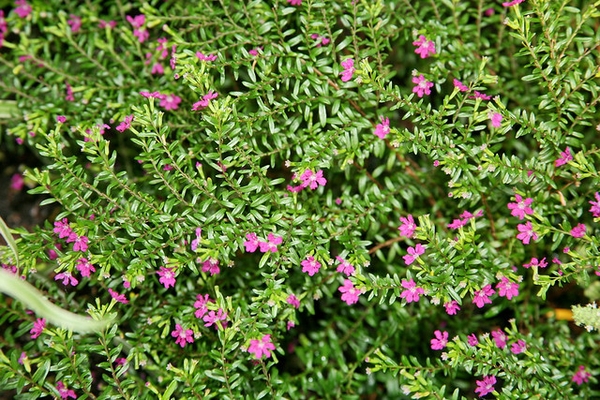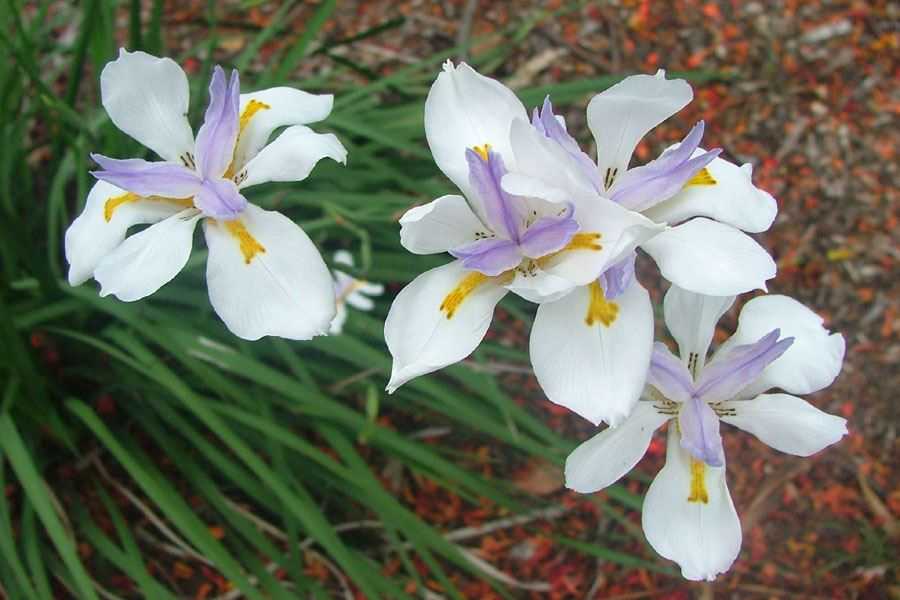We all know by now the obvious weeds – giant devil fig, groundsel, ragweed, etc. These species come by themselves, carried by birds, bats, water or blown on the wind. But what of species intentionally introduced? Brought onto the property, carefully planted and nurtured by the land holder to provide, food, beauty or other amenity. Some of these readily spread with little or no encouragement.
The list of cultivated plants with ‘weed’ potential is long. Does it throw up lots of seedlings all around? Looking around my garden at plants there is a large number of introduced tree species which require attention to stop them spreading even further. Curry leaf tree, Murraya koenigii, and the naturally hairless Brazilian cherry, Eugenia uniflora, both germinate in the surrounding bush. Another Brazilian cherry, Grumichama Eugenia brasilensis, is also a big seeder with numerous seedlings appearing underneath the mother tree. The candlenut tree also has a host of seedlings beneath. Mulberry, ice-cream bean, the list goes on, pop up all over.
Plenty of smaller species are problematic too. Mexican heather, Cuphea hyssopifolia, makes a pretty border around the rose bed but the lawn next to it is chock full of tiny seedlings. Regular mowing keeps them small. Walking iris, Neomarica gracilis, also encroaches into the lawn.
Dietes grandiflora: Burke’s Backyard awarded Dietes ‘plant of the week’, describing it as “virtually unkillable. A great choice for lazy gardeners”. Except that it spreads easily and then you have to manage it. In the greenhouse the tiny military fern, Pilea microphylla, marches around the pots, interfering with the growth of seedlings.
Begonia is another pesky species, germinating in cracks in the pavement, in the rose bed, in pot plants and anywhere it feels like it. Its gnarly root is hard to completely remove so it keeps coming back. The good news is, according to Green Deane of Eat the Weeds, begonia flowers and stems are all edible. He suggests frying the leaves like chips.
Plenty of native species around here also readily produce seed, germinate in numbers and act like weeds. Wattle, Acacia melanoxylon, Macaranga, Macaranga tanarius, Bangalow Palm, Archontophoenix cunninghamiana, Red Cedar, Toona australis, Sandpaper Fig, Ficus coronata, Red Kamala, Mallotus philippensis, Native Tamarind, Diploglottis australis,also pop up in the rose bed, the vegetable garden and even in pot plants. Most of these can be dug up and potted whilst young, creating a source of seedlings to re-plant in bush revegetation areas or share with friends.
When purchasing a rural property, a detailed vegetation survey is a wise and necessary investment, especially if you are not familiar with local native species and the incumbent weeds. You don’t want to buy your dream home, or weekender, in the country and then have to spend all your spare time managing major invasive and already entrenched infestations of a tenacious woody weed like giant devil fig or a vigorous scrambler like cat’s claw. Species declared ‘noxious’ require landholders to eradicate, suppress and/or prevent them from spreading. Beware the cheap block.
Bush regeneration and other gardening activities are rewarding. Plants exude chemicals, phytoncides, which promote good health and boost the immune system. And it’s great to see natural recruitment and the forest returning as it loses its shroud of lantana and begins to form a canopy.
A word of caution. Ticks and mites that bite, abound in the bush around here. A shower, body check and a change of clothing after an afternoon in the bush can reduce their impact.
Happy weeding. You know you love it.



 Follow
Follow